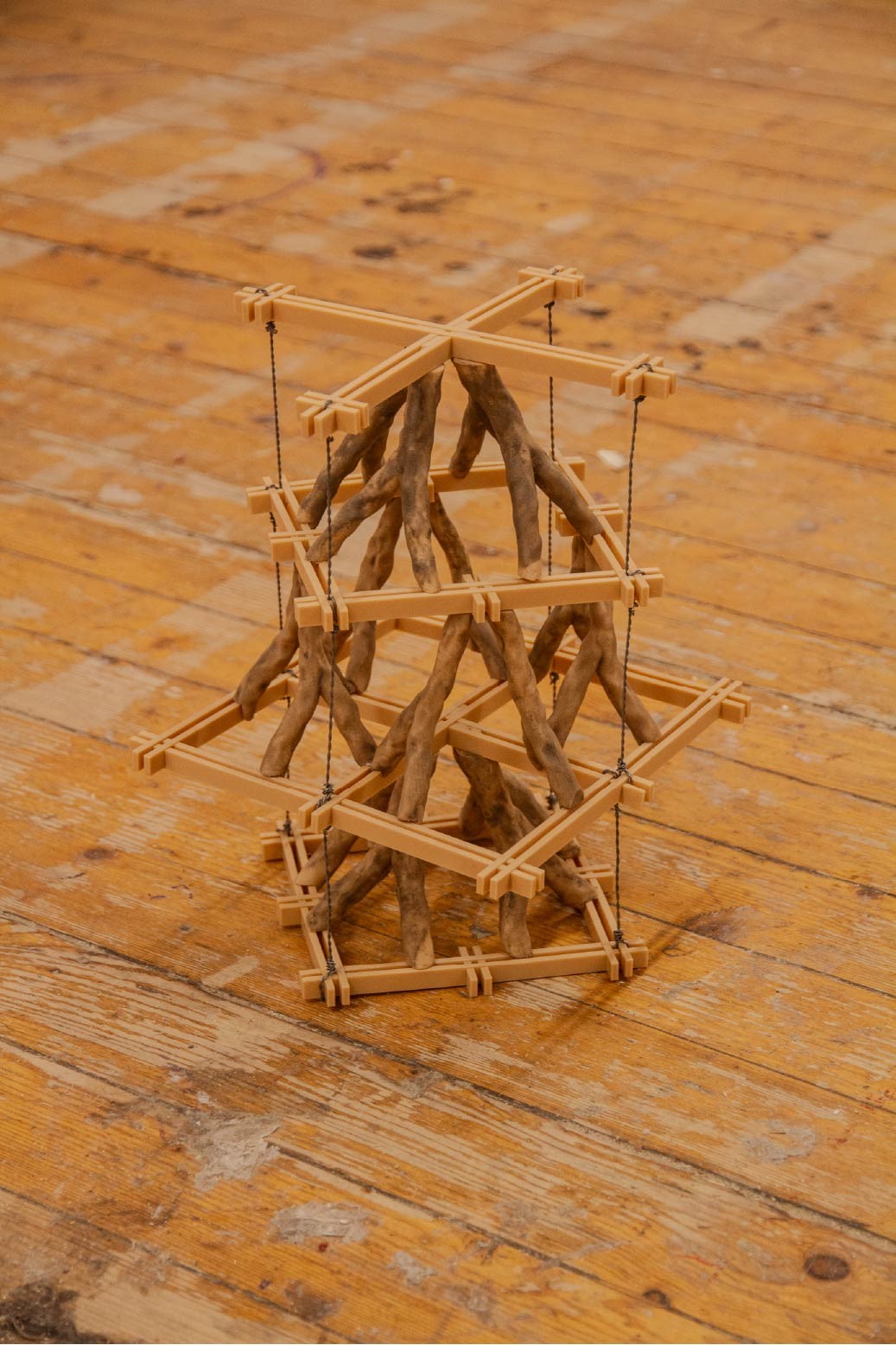Master in Digital Architecture and Emergent Futures 3-7 Feb 2025
School of Architecture at Lund University invites you to presentation for degree project in Digital Architecture and Emergent Futures (ASEM01).
The presentations are public and take place in Full Scale Lab, A-building, Klas Anshelms väg 16, 223 62 Lund.

Oscar Magnusson / Roundwood-Timber Lattice
The project investigates the potential for irregular roundwood elements, particularly tree forks, to be integrated into modular lattice systems that challenge traditional material hierarchies. Conventionally dismissed as waste and processed into wood chips, roundwood tree forks are redefined in this project as valuable structural resources, highlighting their unique geometric and load-bearing properties. By utilizing crown timber in its natural form, the design process questions industrialized norms of material standardization.
Advancements in digital fabrication during the fourth industrial revolution, such as 3D scanning and 6-axis robots, enable the precise customization of architectural components. These technologies allow for the seamless integration of non-standardized materials like roundwood tree forks into grid systems consisting of standardized timber, creating a hybrid lattice. Leveraging these innovations, the project demonstrates how mass-customization techniques can adapt to the irregularity of organic materials, offering a speculative alternative to conventional timber construction practices.
Drawing from Brutalist principles as outlined by Reyner Banham in The New Brutalism: Ethic or Aesthetic? (1966), the project adheres to the use of materials “as found,” geometric clarity, and visible structural elements. The tree forks’ natural forms exemplify this “as found” ethos, while the modular lattice expresses both the structural logic and visual integrity of the system. This reinterpretation situates the project within the Brutalist tradition while integrating modern technological and environmental sensibilities.
Ultimately, the project’s integration of natural irregularity into modular design challenges traditional notions of standardization and repetition. By reimagining roundwood tree forks as primary structural elements, it proposes a sustainable alternative to wasteful material practices. Through this speculative exploration, the project advances the discourse on resource adaptive architectural systems, offering a forward-thinking model for future timber construction.
